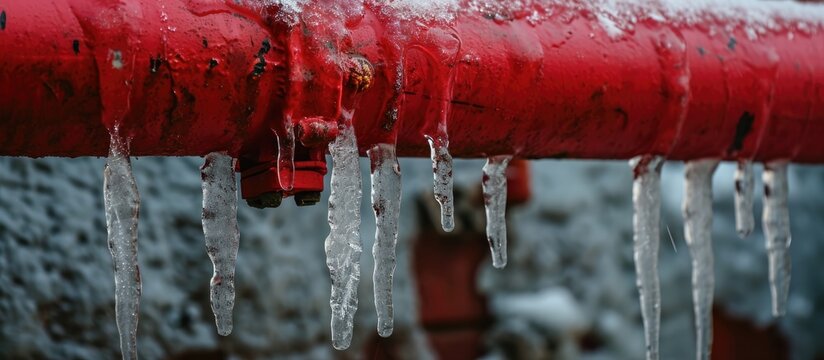Right here further down you might get some high-quality news in regards to How to prepare your home plumbing for winter weather.

Winter can ruin your plumbing, especially by freezing pipes. Right here's how to avoid it from taking place and what to do if it does.
Intro
As temperatures drop, the risk of frozen pipes boosts, potentially resulting in costly repair services and water damages. Comprehending exactly how to stop frozen pipes is crucial for homeowners in cold climates.
Understanding Icy Pipelines
What causes pipes to freeze?
Pipelines ice up when subjected to temperature levels below 32 ° F (0 ° C) for expanded durations. As water inside the pipes freezes, it increases, putting pressure on the pipeline walls and possibly causing them to burst.
Dangers and problems
Frozen pipes can cause water disturbances, residential or commercial property damages, and costly fixings. Ruptured pipes can flood homes and create comprehensive structural damage.
Signs of Frozen Water Lines
Identifying frozen pipes early can stop them from bursting.
Just how to identify frozen pipelines
Look for reduced water flow from taps, uncommon odors or noises from pipelines, and visible frost on exposed pipelines.
Prevention Tips
Shielding vulnerable pipes
Wrap pipelines in insulation sleeves or make use of warmth tape to shield them from freezing temperature levels. Focus on pipes in unheated or exterior areas of the home.
Heating strategies
Keep indoor areas properly heated up, particularly locations with plumbing. Open closet doors to enable cozy air to circulate around pipelines under sinks.
Protecting Outdoor Plumbing
Garden hose pipes and exterior taps
Disconnect and drain pipes yard tubes prior to wintertime. Set up frost-proof spigots or cover outdoor faucets with insulated caps.
What to Do If Your Pipelines Freeze
Immediate actions to take
If you believe frozen pipes, keep taps open to alleviate stress as the ice thaws. Make use of a hairdryer or towels taken in warm water to thaw pipelines slowly.
Long-Term Solutions
Structural adjustments
Take into consideration rerouting pipes far from outside walls or unheated locations. Include extra insulation to attic rooms, basements, and crawl spaces.
Upgrading insulation
Buy top quality insulation for pipes, attics, and walls. Proper insulation aids keep consistent temperatures and lowers the risk of frozen pipes.
Final thought
Avoiding frozen pipelines needs positive procedures and fast feedbacks. By understanding the causes, signs, and safety nets, home owners can safeguard their pipes throughout winter.
5 Ways to Prevent Frozen Pipes
Drain Outdoor Faucets and Disconnect Hoses
First, close the shut-off valve that controls the flow of water in the pipe to your outdoor faucet. Then, head outside to disconnect and drain your hose and open the outdoor faucet to allow the water to completely drain out of the line. Turn off the faucet when done. Finally, head back to the shut-off valve and drain the remaining water inside the pipe into a bucket or container. Additionally, if you have a home irrigation system, you should consider hiring an expert to clear the system of water each year.
Insulate Pipes
One of the best and most cost-effective methods for preventing frozen water pipes is to wrap your pipes with insulation. This is especially important for areas in your home that aren’t exposed to heat, such as an attic. We suggest using foam sleeves, which can typically be found at your local hardware store.
Keep Heat Running at 65
Your pipes are located inside your walls, and the temperature there is much colder than the rest of the house. To prevent your pipes from freezing, The Insurance Information Institute suggests that you keep your home heated to at least 65 degrees, even when traveling. You may want to invest in smart devices that can keep an eye on the temperature in your home while you’re away.
Leave Water Dripping
Moving water — even a small trickle — can prevent ice from forming inside your pipes. When freezing temps are imminent, start a drip of water from all faucets that serve exposed pipes. Leaving a few faucets running will also help relieve pressure inside the pipes and help prevent a rupture if the water inside freezes.
Open Cupboard Doors
Warm your kitchen and bathroom pipes by opening cupboards and vanities. You should also leave your interior doors ajar to help warm air circulate evenly throughout your home.

Do you like more info about How To Avoid Freezing Pipes? Create feedback down the page. We will be glad to listen to your feelings about this blog entry. We hope that you come back again in the future. Liked our content? Please share it. Let others check it out. We cherish your readership.
Click Here
 Anthony Michael Hall Then & Now!
Anthony Michael Hall Then & Now! Bug Hall Then & Now!
Bug Hall Then & Now! Katie Holmes Then & Now!
Katie Holmes Then & Now! Mike Vitar Then & Now!
Mike Vitar Then & Now! Michelle Trachtenberg Then & Now!
Michelle Trachtenberg Then & Now!